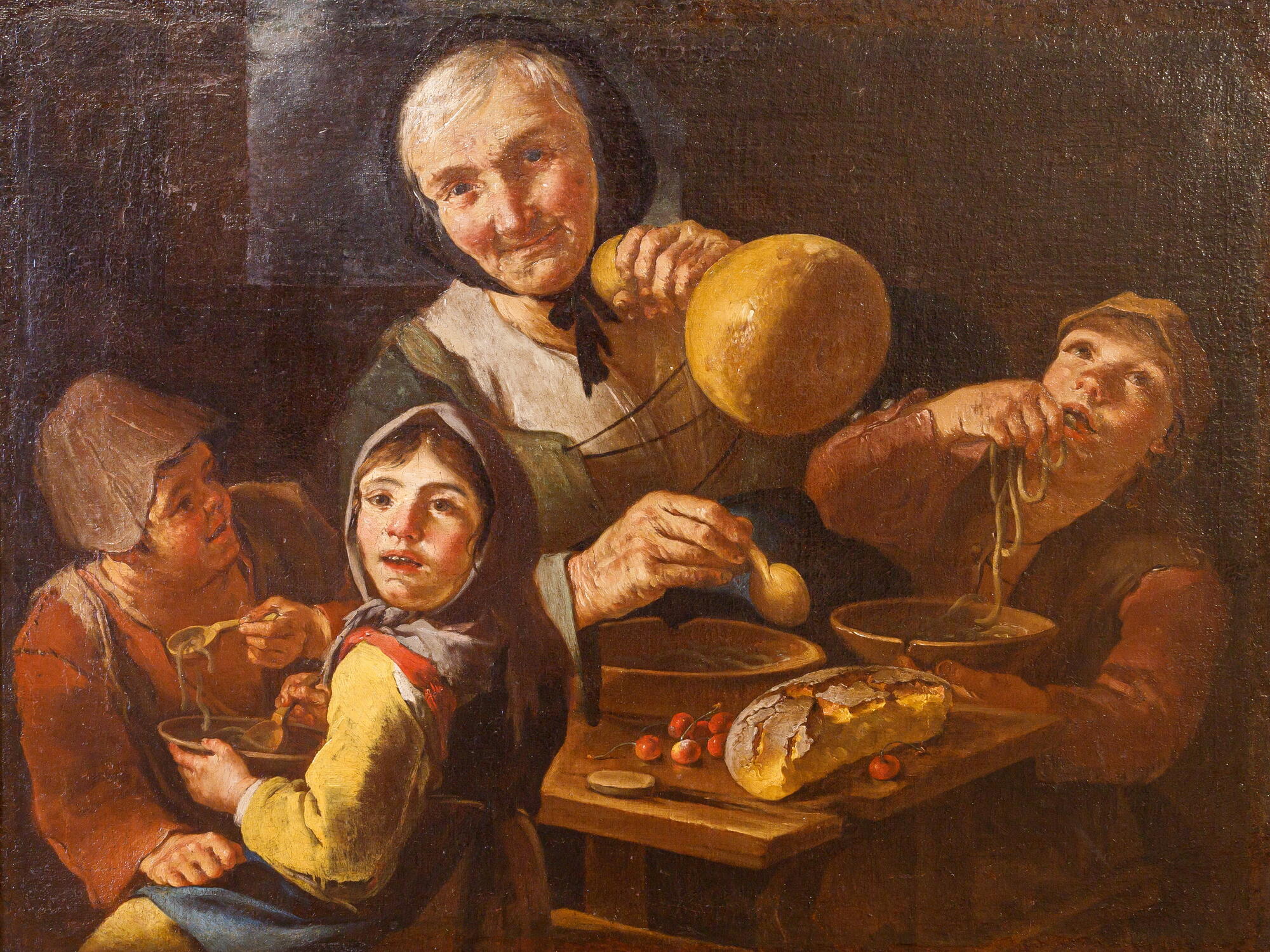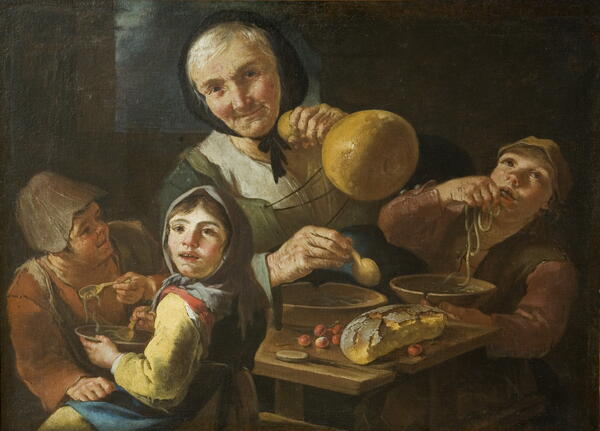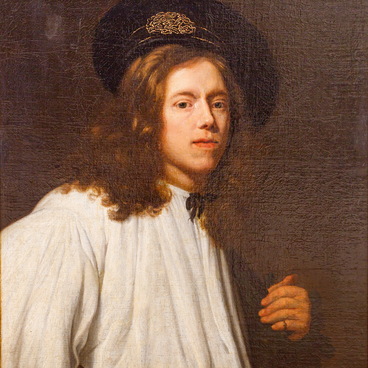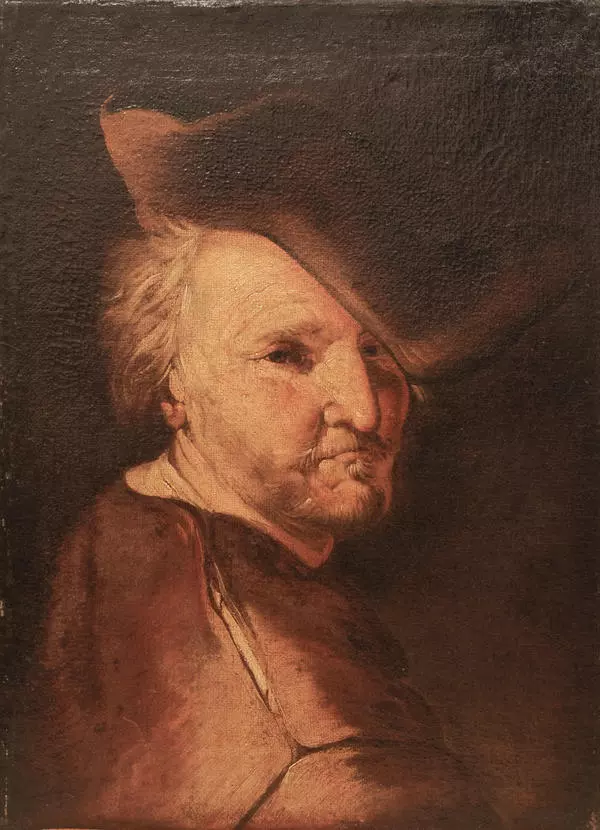Giacomo Francesco Cipper is a unique and original painter of German ancestry who worked in Lombardy and Veneto. He was a student of the Danish artist Bernhard Keil, and was also known as “il Todeschini”, with the nickname based on the word “todesco” meaning “German”.
The painter’s real name was Jakob Franz. He was born on July 15, 1664, in the town of Feldkirch located in the Alpine foothills in Austria. At the age of 25, he moved to Milan where he stayed and lived to a venerable age. There he also became known under the Italianized name of Giacomo Francesco.
In his art, Giacomo combined Baroque traditions with the new genre of realism. He was heavily influenced by the so-called “painters of reality” who were popular in 17th- and 18th-century Italy. The origins of this style can be traced back to the paintings of Leonardo da Vinci, but it was mostly shaped by the art of Caravaggio and his students. In their paintings, they strongly emphasized the nature of characters and the genre peculiarities of compositions and did not attempt to embellish reality.
The subjects and images used by Giacomo Francesco are similar to those of the Dutch and Flemish genre painting. Usually, the artist depicted city markets, peasants at the table, fights, and craftsmen at work. These paintings feature subjects of everyday life, with elements of still life and realistic landscape without romanticization. Giacomo had his own characteristic style, and his paintings can be recognized by his technique as well as the simple and sometimes even rough faces of people.
Giacomo Francesco depicted the material world around him in an honest and true-to-life manner. In his paintings, people scale fish, breastfeed their babies, and break loaves of bread with their hands. The viewer can observe the story of several generations, including the wise and feeble old people, hardworking and still energetic parents, as well as playful children and adolescents.
The painting “Peasants at the Table” is a typical example of the artist’s style. It is characterized by a classical balance in composition, simplicity, and lack of detail. The artist compresses the space and alternates various planes. The steady diffused light illuminates the figures in the poorly lit interior. The elaborate plasticity and the slow movements emphasize the value of every person in the picture. The atmosphere in Giacomo Francesco’s art balances irony and humor which is sometimes straightforward but never disparaging. He always looks at his characters with kindness and compassion.
The painter’s real name was Jakob Franz. He was born on July 15, 1664, in the town of Feldkirch located in the Alpine foothills in Austria. At the age of 25, he moved to Milan where he stayed and lived to a venerable age. There he also became known under the Italianized name of Giacomo Francesco.
In his art, Giacomo combined Baroque traditions with the new genre of realism. He was heavily influenced by the so-called “painters of reality” who were popular in 17th- and 18th-century Italy. The origins of this style can be traced back to the paintings of Leonardo da Vinci, but it was mostly shaped by the art of Caravaggio and his students. In their paintings, they strongly emphasized the nature of characters and the genre peculiarities of compositions and did not attempt to embellish reality.
The subjects and images used by Giacomo Francesco are similar to those of the Dutch and Flemish genre painting. Usually, the artist depicted city markets, peasants at the table, fights, and craftsmen at work. These paintings feature subjects of everyday life, with elements of still life and realistic landscape without romanticization. Giacomo had his own characteristic style, and his paintings can be recognized by his technique as well as the simple and sometimes even rough faces of people.
Giacomo Francesco depicted the material world around him in an honest and true-to-life manner. In his paintings, people scale fish, breastfeed their babies, and break loaves of bread with their hands. The viewer can observe the story of several generations, including the wise and feeble old people, hardworking and still energetic parents, as well as playful children and adolescents.
The painting “Peasants at the Table” is a typical example of the artist’s style. It is characterized by a classical balance in composition, simplicity, and lack of detail. The artist compresses the space and alternates various planes. The steady diffused light illuminates the figures in the poorly lit interior. The elaborate plasticity and the slow movements emphasize the value of every person in the picture. The atmosphere in Giacomo Francesco’s art balances irony and humor which is sometimes straightforward but never disparaging. He always looks at his characters with kindness and compassion.




